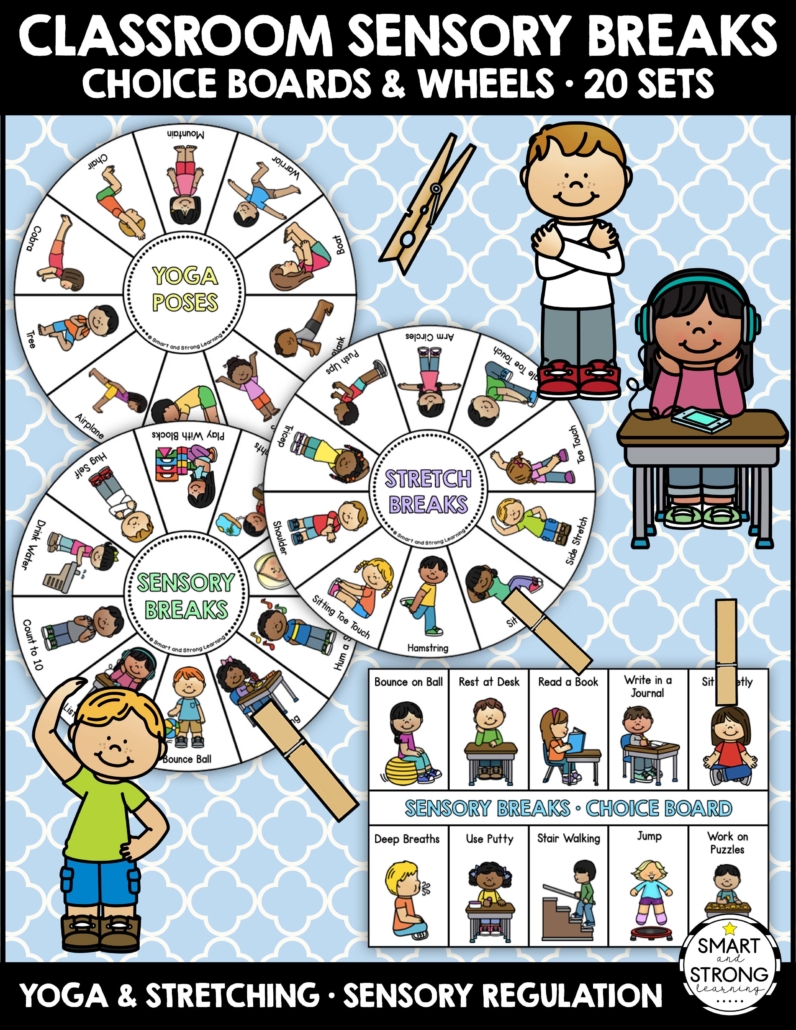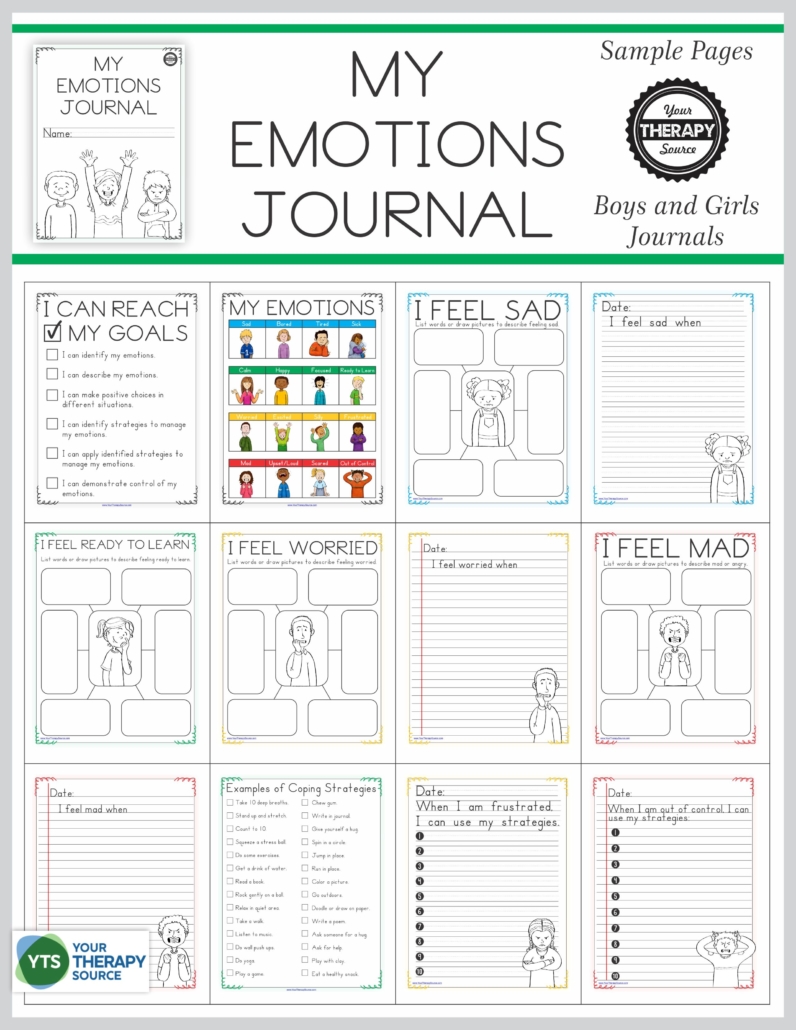Classroom Fidgets – FREE Tools to Help!

Do you find your students playing with classroom fidgets? Perhaps they treat them more like fidget toys than tools? Try using this FREE self generated data collection tool with your students to determine if classroom fidgets are helping. It will help them explore about their sensory preferences and how they learn best. Learning how to collect self-generated data is an important skill to teach your students. And bonus – it also helps to reduce workload on teachers!
WHAT ARE THE BENEFITS OF FIDGETS IN THE CLASSROOM?
Fidgets can help students stay focused, reduce stress, and increase engagement. Fidgets also benefit those with sensory needs, allowing them to become more active participants in the classroom. Different fidgets provide different sensory feedback. Some fidget toys may help with keeping young minds focused during circle time and other tools may help older kids during classroom lectures.
The overall goal of classroom fidgets is to get the body and mind ready to learn. They are not meant to be distracting to the task or lesson.

Sensory Choice Boards
EXAMPLES OF FIDGET TOOLS
Using fidget tools can help with your energy level, focus, anxiety, and more. Everyone’s body and mind react differently to certain fidget tools. You need to learn what fidget tool works best for you. When you try out new fidget tools, take a moment to reflect on how your body and mind feel while you use the FREE data collection tool to record the information. Below is a small list of fidget tools.
LIST OF FIDGET TOOLS FOR THE HANDS AND ARMS
- Squishy balls: Soft, squeezable toys that can provide stress relief and stimulate the senses. Nice for sensory seekers.
- Stress balls: Calming fidgets that are firm rubber balls that can help to relieve tension and frustration by squeezing it in your hand.
- Fidget spinner: Small three-pronged spinning toys. Fidget spinners provide sensory and visual stimulation for some people. Read about fidget spinners and ADHD.
- Fidget cubes: Small cubes with buttons and switches of different shape, size, and texture that keep the fingers busy. Encourage fine motor skills too.
- Putty: Similar to play dough but provide more resistance. Also can include scents. Used as a sensory tool for tactile and olfactory stimulation. When students pull and stretch the putty in their fingers, it can be helpful or very distracting.
- Finger Weights: Wrist and finger weights are designed to add just enough resistance to help focus and calm.
- Textured Rings: Wearable rings are made of various textures that can provide constant tactile sensory stimulation for fidgety hands.
- Koosh Balls: Soft, rubbery balls covered in thousands of tiny strings, providing tactile stimulation and calming effects.
- Squeeze Toys: Small hand-held toys can provide proprioceptive input, calming and sensory stimulation when squeezed.
- Fidget Pencil Toppers: Attachable tops for pencils, pens, and markers that can help relieve stress and anxiety while writing or drawing.
- Kneadable erasers: Calming fidgets that are low profile, quiet fidget tools for the classroom.
- Homemade fidget toys like stress balls, etc.
LIST OF FIDGET TOOLS FOR THE LEGS AND FEET
- Foot/Leg Fidgets: Adjustable straps that attach to the bottom of the chair or desk legs to help provide stimulation for the legs and feet through the school day. Great to burn off excess energy.
- Balance Boards: Boards with a flat surface and a small roller underneath that provide feedback when the user shifts their weight back and forth.
- Wobble Cushions: Round cushions with an uneven bottom designed to give your feet something interesting to move around on.
- Foot Pedals: bicycle pedals that fit under the desk to stimulate the legs and feet
- Stability Ball: Sitting on a large ball to provide whole body stimulation.
- Different textured socks to provide tactile input
- Weighted lap pads

Cardio Aerobic Exercises for Small Spaces
LIST OF CLASSROOM FIDGETS FOR THE HEAD AND NECK
- Head Massagers: Gentle massagers for the head and neck
- Chewable Necklaces: Necklaces made from safe materials designed to be chewed on for calming oral motor stimulation.
- Fidget Pillows: Soft pillows with small bumps, pockets, and lumps for tactile stimulation.
- Fidget Necklaces: Necklaces made from various materials that can be spun, twisted, and manipulated for calming stimulation.
- Chewing gum
- Drinking from a water bottle through a straw
- Crunchy snacks
- Scented chapstick
DO FIDGETS REALLY WORK IN THE CLASSROOM?
There is conflicting research on how much fidgets work in the classroom because students and fidget tools are unique. Collecting data to determine what fidgets work for the students in your classroom is essential.
Once your students have tried out several different fidget tools, teach them to reflect on how their body and mind felt while using each one. Did they help you focus? Was it easier to concentrate? Did you experience any calming effects?
Use our FREE self-generated data collection worksheets to help your students learn their sensory preferences.

Emotional Regulation Worksheets – For Boys and Girls
HOW TO COLLECT DATA ABOUT FIDGET TOOLS
One of these easiest and best way to collect data in the classroom is to teach your students self-generated data collection. This encourages independence, problem solving, self reflection and more!
This FREE PDF download for fidget tools includes three helpful pages to help your students take ownership of their learning preferences and how classroom fidgets can help or hinder:
- Brief explanation of why you should determine what fidget tools work best for you.
- Fidget Tool Trial Data Collection – try out different fidget tools and reflect on how your body and mind feel before, during and after fidget use.
Daily Fidget Use Data Collection – when you find a fidget tool that might work for you, keep track for 5 days to start. How does the fidget tool affect your:
- energy levels
- focus or attention span
- anxiety or worries
- or a different feeling or functional outcome.
DOWNLOAD YOUR FREE CLASSROOM FIDGETS DATA COLLECTION TOOLS HERE
Sign up to receive emails from Your Therapy Source. You will be redirected to the download. If you already subscribe, you can simply enter your email too. If you can not see the sign up box, email info@yourtherapysource.com.



